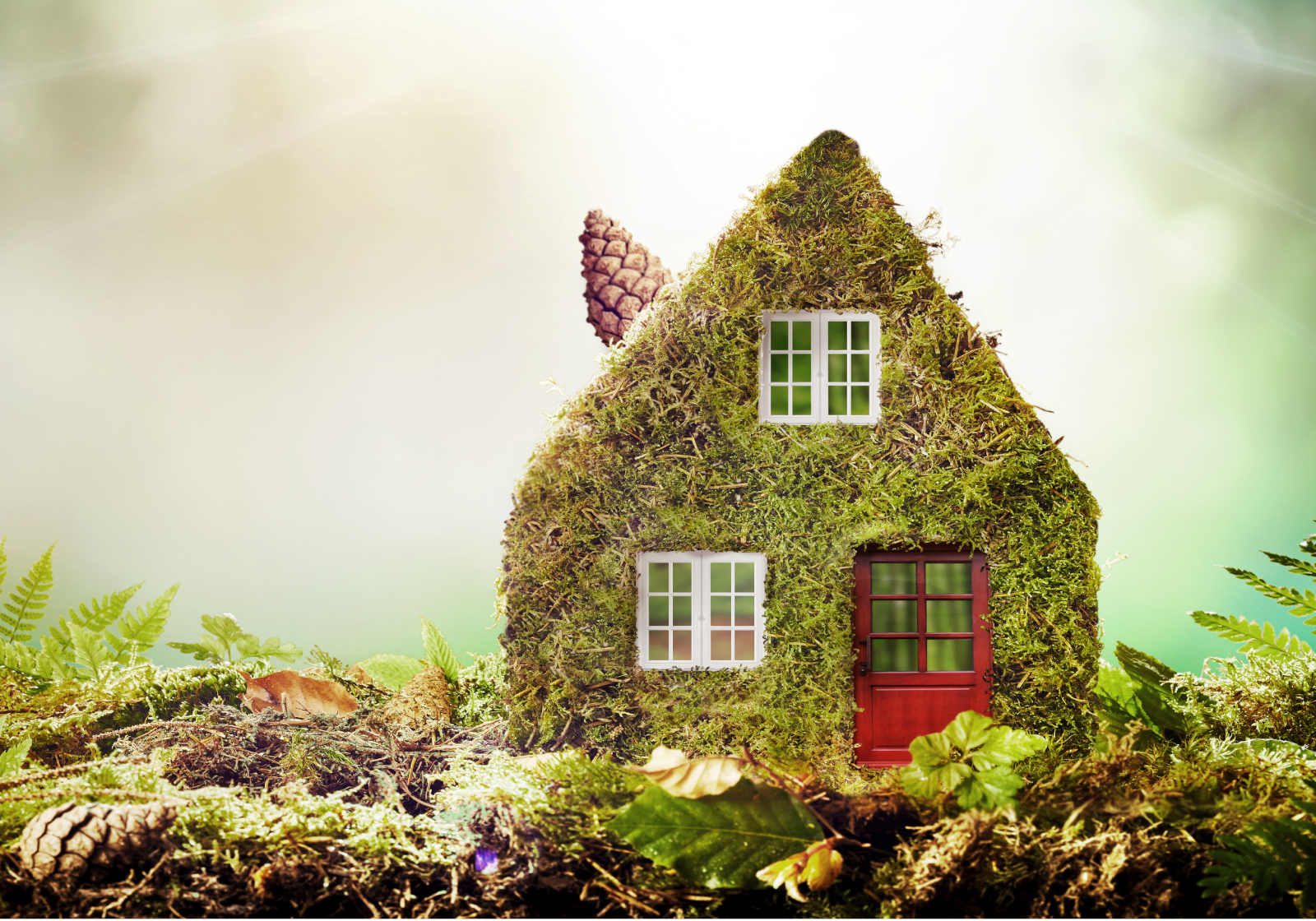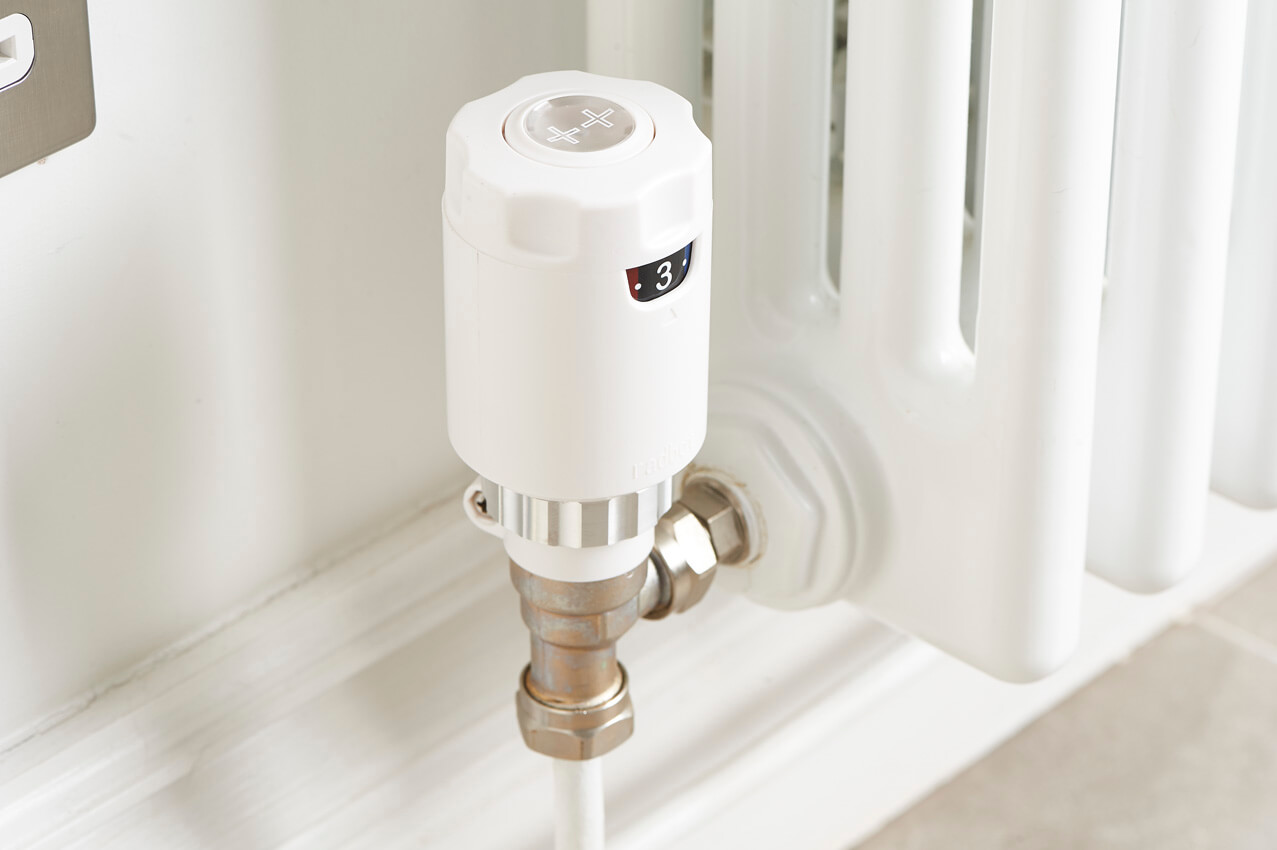Eco-friendly DIYs for a greener home
Now we’ve talked a lot about how important it is to reduce energy consumption, reduce water usage and reduce our plastic waste. But we haven’t really delved into what impact our homes – our physical, brick and mortar homes – have on our individual carbon footprints.
Whilst what we wear, what we consume, where we go and how we get there is a big part of our carbon footprint, so is where we live. The property we live in has a massive impact on the environment, and it’s important to take that into account when reducing our carbon footprint. We mustn’t forget to focus on making our homes more sustainable, whatever type or size of building it is, whether we rent or own.
This isn’t just existing properties either – new builds and refurbished properties contribute drastically to CO2 emissions. Let’s break down some numbers.
Building or renovating a house is very carbon intensive
The average person in the UK produces about five tonnes of CO2 annually. The average masonry-built house in the UK takes a whopping 50 tonnes of CO2 to build – and that’s not considering the carbon footprint of its “operational” CO2 (aka emissions produced once house is occupied). For refurbished houses, this falls to about 15 tonnes – which is still a hefty amount, all things considered.
So, building one house generates about as much CO2 as one person living an average lifestyle for a decade.
It also matters what houses are made from – as some materials, like brick and concrete, produce lots of CO2, whereas other materials like timber actually act as a carbon store. Other materials are even more costly in CO2 emissions, with every tonne of steel accounting for 2 tonnes of CO2. Here are some more facts about homes in the UK:
- 20% of the UK’s housing stock was built before 1919 – so 1/5 of the population live in solid-walled homes. They have a reputation for damp, draughts and can be energy intensive to live in (but don’t have to be!).
- Homes account for 15% of the UK’s domestic energy usage – making older homes more efficient would have an impact on energy consumption and financial savings for households in the UK.
- The construction industry accounts for 38% of total energy-related CO2 emissions, whilst construction, demolition and excavation industry accounts for 63% of the UK’s annual waste.
The rising demand for housing in the UK means that more and more housing is being built, and with COP26 nearing and researchers worldwide calling for urgent action, it’s clear that making our homes greener is going to be vital.
Of course, one thing we must keep doing is putting pressure on developers and the government to ensure new homes are built as energy efficient and environmentally friendly as possible. But past that you might be asking yourself, what more can I do when DIYing at home to be eco-friendly? Here are some tips for you!

Reduce draughts and increase airtightness for colder months
There’s nothing worse (at least, in my opinion) than having to heat a draughty house in winter. Banishing those draughts and improving airflow in your home can really help reduce the amount of heat energy you’re losing, saving you money in the long run. It’ll also help heat your home more efficiently. Doing things like:
- Caulk gaps in skirting boards or floorboards
- Use decorators’ filler to close off gaps where pipework goes through walls and floors.
- Install/make sure your garage door is draught proof if it connects to your home.
- When installing new flooring, make sure floorboards are insulated, saving £40-50 annually.
- Fill cracks in the walls (after having checked for more serious issues).
- Add blinds to windows, especially smaller ones to help keeps draughts out.
- Insulate your water cylinder and any exposed pipework around it (you could save up to £60 per year!).
- Draught excluders can also help save up to £25 per year (learn how to make your own in this month’s EcoBabble free download!).
- Upgrade windows and doors (especially patio doors) to reduce heat loss (if renting, you can use self-adhesive foam weatherstrips that you can easily remove).
- Check your loft insulation condition – if it’s degraded, then replace it.
- Board out your loft – this will help save insulate it further and will stop loft insulation from becoming compressed, which reduces its efficiency.
- Make sure the loft hatch is insulated too!
Utilise smart technology
Smart technology really puts all the control in your hands and can help you save energy and gives you extra peace of mind.
- Use smart plugs and smart bulbs to control your electronics and lighting.
- Install smart TRVs (thermostatic radiator valves) to help control your heating.
- Install or use water leak detectors to prevent leakages sooner rather than later.
- Invest in smart lighting kits as a complete smart lighting solution for throughout your home if your taking on a renovation, self-building, or just looking to make general improvements to your home.

Choose more sustainable products when renovating your home
Generally, when restoring, renovating or building your home, there are lots and lots of materials, chemicals and equipment that you would need to use that aren’t necessarily environmentally friendly or renewable. We’re now seeing a growing trend online where people are looking for ways to renovate and self-build in a more eco conscious, renewable way and I have to say, I’m here for it.
Whilst there may be some compromises you can’t make – and some may be a bit more on the pricey side – there are lots of ways you can save money doing it too.
- Choose eco-friendly paints with low- or no-VOC (VOCs are chemical ingredients that evaporate into the atmosphere when the paint is drying). They perform as well as conventional paint, offering beautiful colour, coverage and durability without any of the harmful added solvents. Companies like Graphenstone UK, Earthborne, Little Greene Paint Paint & Paper supply these kinds of paints – here’s a handy list of more natural paint suppliers too.
- Use reclaimed materials, such as floorboards, doors, fixtures and fittings. You can find some truly beautiful things at reclamation yards, on selling sites and more. These pieces will add character to your home whilst saving something from a skip. All it takes is a bit of elbow grease, time and some paint or treatments to return them to their former (or future) glory. And, you can often get them for a great bargain!
- Choose sustainable suppliers – there are more and more manufacturers of sustainable products cropping up and it’s amazing to see what they have to offer. Some examples are:
- GlassEco and Designfinger transform waste products such as glass and concrete into contemporary, functional worktops, bespoke surfaces and splashbacks.
- The Eco-Friendly Tile Company manufactures carbon neutral porcelain tiles made from recycled television screens and car windscreens while the US-based company, Eco Friendly Flooring has a stylish line of recycled aluminium and cement tiles for walls and floors.
- Bereco Windows manufacture sash windows from 100% FSC timber – a sustainable material that’s been sustainably sourced.
- IKOslate manufacture roof tiles from mineral reinforced 99% recycled and re-engineered materials. They’ve got a high-quality finish so you know they’ll last too!
Considering the environment in your decision-making process is important, so that you can make swaps within your budget range. Some good questions to ask yourself when shopping for materials or items for your home are:
- Where did it come from? Consider energy used to produce it, chemicals released during production, is it renewable and are you creating a demand for new products etc.
- How long will it last? Quality made items will last a long time, but so will reclaimed and recycled materials given a new lease of life.
- What will happen at the end of its life? Natural materials won’t contribute to landfill and can decompose/naturally breakdown at the end of their life.
With these, you’ll be right on your way to making your house a home with a smaller carbon footprint.
Reduce your energy & water consumption
We covered energy efficiency when it comes to your household appliances last month, and have covered water consumption before but here are a more things you can do to reduce energy and water consumption around the house.
DIY tips to reduce energy consumption
- Install energy efficient LED lighting wherever you can – including in fridge-freezers. We’ve made it easier to find the exact bulb you’re looking for on our website.
- Have your fridge-freezer at optimal temperatures: 4 degrees for your fridge and -18 degrees for your freezer is good.
- Maintain your appliances – check for degraded seals, keep your fridge/freezer coils clean and free of dust, keep dishwasher and tumble dryer filters clean etc.
- Do more batch cooking and slow cooking – this will help use your oven less, fill up voids in your freezer and slow cookers use 3x less energy than conventional ovens!
- Utilise residual oven heat – this is more my own personal hack. Once you’re done cooking, open oven (where safe to do so around kids & pets) to heat the room with residual heat. Great if you’re in a property with only electric heating or if you rent!
- Plan ahead with cooking so you don’t need to defrost food in microwave.
- Make use of the sun – in the summer months for drying laundry (it’s a great natural stain remover and odour killer!), for powering outdoor lighting and other electronic gadgets.
- Replace your boiler when needed, and new radiators can improve efficiency by up to 50%.
- Install radiator reflectors – they sit behind the radiator and reflect the heat back into the room rather than through the wall.
- Make sure your thermostats are installed in a central location. If it’s installed by a door or window, cold drafts will trick it into thinking the room is colder than it is, costing you more in energy and money.
- Like washing on a cold cycle reduces energy, turning thermostat down by just a few degrees to saves approximately £45/year per 1 degree reduction.
- Leave room between radiators and furniture, so the heat can circulate around the room.
- Get shorter curtains, or turn up existing ones so they fit easily behind radiators, helping heat circulate around the room.
DIY tips to reduce water wastage
- Make use of the rainwater – set up a water butt or rainwater harvesting system to use it to water your garden, wash cars, fill ponds and other water features. If you can mechanically filter it, you could also use it to general household cleaning of floors, windows, to flush toilets and even wash clothes.
- Utilise tap aerators to reduce the flow of water from your taps – these are easy to choose and fit from our website.
- Opt for a low flow shower – I chose a Methven Aurajet Aio hand shower and it performs amazingly. We have a range of hand showers to suit any budget, so be sure to make the most of your planet points!

More DIYs to reduce waste around your home
Here’s where the creative crafter in you gets to shine! There are so many things you can upcycle, recycle and repurpose into new bits and bobs for your home. Here are just some ideas of things you can either set up or repurpose for a greener, environmentally friendly home.
- Set up a mini recycling centre – you could also save your soft plastics if you can for supermarket collection boxes.
- Upcycle old furniture (friendly on budget too!).
- Turn glass jars from sauces, jam and other foods into storage jars with a glue gun, paint and a handle (you could even use a large marble or even a toy figurine!).
- Recycle old clothes into rag rugs/cushion covers/teddy bears etc.
- Recycle your books as shelves if they’re too delicate for reading or have started to age too much!
- Pallet furniture for your garden – one of the SaveMoneyCutCarbon team gave this a go this summer, with great results.
Get unlimited access to our exclusive content, including this & many other of our guides by joining the SaveMoneyCutCarbon Club
The benefits of our ClubAlready a member?